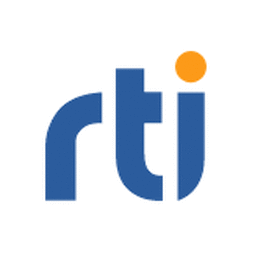下载PDF

RTI
您的系统。作为一个工作。
概述
公司介绍
RTI 为工业物联网(IIoT) 提供连接平台。 RTI 的解决方案跨越现场、雾和云。它的可靠性、安全性、性能和可扩展性在最苛刻的工业系统中得到了证明。部署的系统包括医疗设备和成像;风能、水能和太阳能;自主飞机、火车和汽车;交通管制;油和气;机器人、船舶和国防。 RTI 是最大的基于 Object Management Group (OMG) Data Distribution Service™ (DDS) 连接框架的产品供应商。
物联网解决方案
RTI 致力于开放标准、开放社区资源和开放架构。 RTI 提供对象管理组数据分发服务(DDS) 标准的领先实施。对于高性能集成系统,DDS 是理想的通信协议。 DDS 是一种提供构建复杂实时应用程序所需的灵活性、可靠性和速度的技术。 RTI Connext DDS 已经为关键任务军事系统、先进医疗系统、风力涡轮机农场、空中交通管制、机器人技术和工厂自动化提供了成熟的基础设施。
主要客户
奥迪、西门子、通用电气、大众汽车、Joy Global、BK Medical、DocBox、欧洲航天局、Insitu、洛克希德马丁、美国宇航局人类探索远程机器人 (HET)
技术栈
RTI的技术栈描绘了RTI在等物联网技术方面的实践。
-
设备层
-
边缘层
-
云层
-
应用层
-
配套技术
技术能力:
无
弱
中等
强
实例探究.

Case Study
Siemens Wind Power
Wind provides clean, renewable energy. The core concept is simple: wind turbines spin blades to generate power. However, today's systems are anything but simple. Modern wind turbines have blades that sweep a 120 meter circle, cost more than 1 million dollars and generate multiple megawatts of power. Each turbine may include up to 1,000 sensors and actuators – integrating strain gages, bearing monitors and power conditioning technology. The turbine can control blade speed and power generation by altering the blade pitch and power extraction. Controlling the turbine is a sophisticated job requiring many cooperating processors closing high-speed loops and implementing intelligent monitoring and optimization algorithms. But the real challenge is integrating these turbines so that they work together. A wind farm may include hundreds of turbines. They are often installed in difficult-to-access locations at sea. The farm must implement a fundamentally and truly distributed control system. Like all power systems, the goal of the farm is to match generation to load. A farm with hundreds of turbines must optimize that load by balancing the loading and generation across a wide geography. Wind, of course, is dynamic. Almost every picture of a wind farm shows a calm sea and a setting sun. But things get challenging when a storm goes through the wind farm. In a storm, the control system must decide how to take energy out of gusts to generate constant power. It must intelligently balance load across many turbines. And a critical consideration is the loading and potential damage to a half-billion-dollar installed asset. This is no environment for a slow or undependable control system. Reliability and performance are crucial.

Case Study
Schneider Automation PLCs
Schneider Automation wanted a solution to its PLCs on the factory floor so that they can meet cost target for manufacturing systems. The challenges were that the solution needed to connect smaller PLCs and embedded devices that have limited storages or processing capacities.
-Ground-Control-Station-(GCS).png)
Case Study
Unmanned Aircraft Systems (UAS) Ground Control Station (GCS)
General Atomics had to meet strict requirements for data bandwidth and availability. They could have designed and implemented a custom solution for data integration on their own, but that would have significantly delayed the project. Plus the lifecycle cost of developing and maintaining a custom software solution for a specific project can be enormous.






